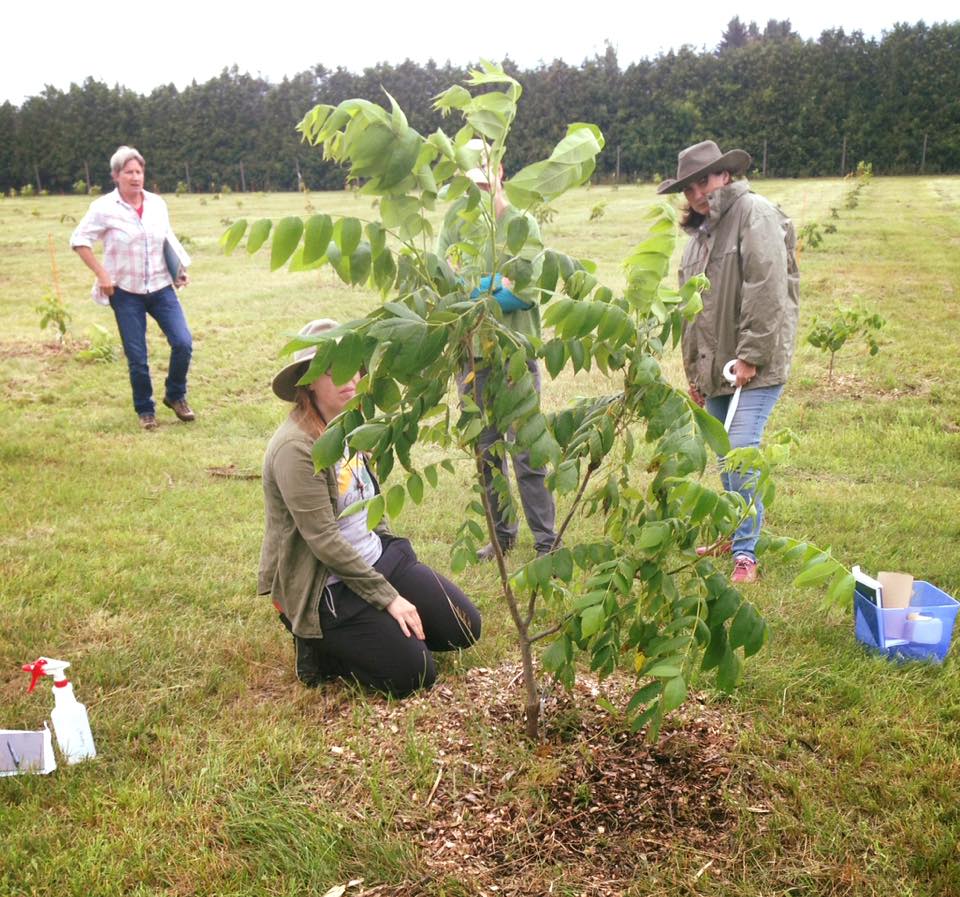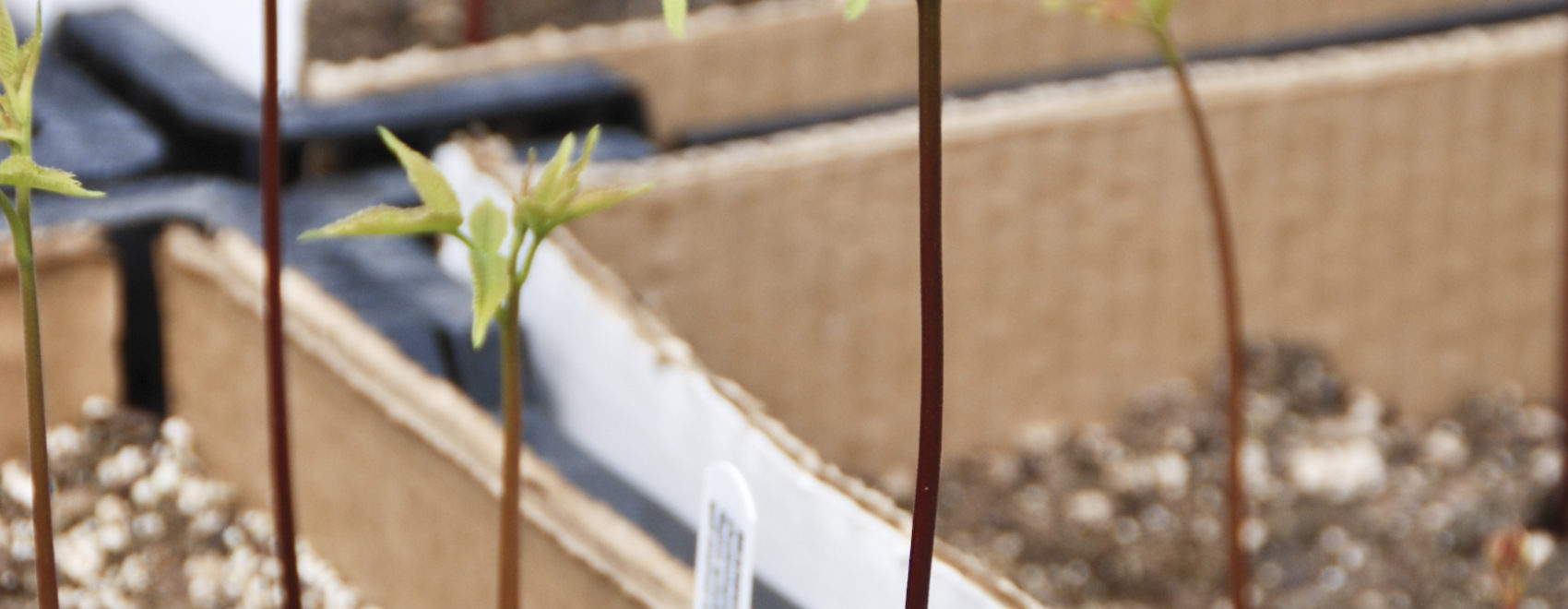The Endangered Species Act (ESA 2007) allows Butternut seed to be freely collected and grown and the seedlings planted (note this is not true for all species at risk). Those seedlings are not protected by the ESA 2007 unless they were planted as a condition of an ESA Permit or Regulation. Visit Ministry of Environment, Conservation and Parks to learn more about how the ESA affects Butternut and landowners.
We encourage people to plant Butternut but there can be challenges. Butternut canker fungus can kill many trees within the first 10 years, especially if they are stressed by poor planting, improper tending or an unsuitable site.
Some growers advertise that they have ‘resistant’ trees, however there is currently no proven genetic tolerance to Butternut canker.

Collecting Seed – Ensure you collect from a Butternut – not the similar Black Walnut and Butternut hybrids. Seeds may fall prematurely due to winds, drought or insects, but mature seed falls with the first heavy frost. The seed is oblong, 50 mm long with a yellow-green pulpy husk over a large nut. The husk turns brown-black with frosts. The inner, brown nut has sharp ridges and a sharp point. Before collecting, cut a few to ensure that the seed is mature: the nut ‘meat’ fills the cavity and is white and firm (not milky). Collect after 10% have fallen and before animal predation. Shake or knock seed down (gently) with a pole or with a throw bag and line aimed over limbs. In large trees a climber can knock seed down with a pole. Occasionally, squirrel caches can be raided. The husk tissue stains – avoid contact with skin and clothing. Collectable seed is not produced every year. Lack of flowering, frosts or extreme rains and winds, insects and seed predation mean a collectable crop occurs every 3 to 5 years. And unlike some species butternut seed cannot be easily stored for more than a year. The mature pollen and seed producing butternut trees are being lost due to cutting, land development and the canker, and this is greatly reducing seed availability for natural regeneration and planting efforts.
Sowing the seed – Butternut is an aggressive rooter. Plant it where it will stay, or plant in pots and transplant it within a year. Sow the seed immediately after collection an inch or 2 deep in the ground or in pots. Don’t let seed dry out or heat up. Squirrels are a problem until the seed germinates in the spring. You can use chicken wire over the seedbed or keep the pots in an animal-proof area. The seed requires a cold dormant period to germinate.
Site Selection – Butternut needs full overhead sunlight. The best soil is deep, moist, well-drained, fine to medium textured and limestone-based. Drier, shallow soils may suffice in full sunlight if you can water them in the first 5 years. Seedlings grow better when they are protected from prevailing winds (NW). They initially grow well in smaller, protected openings such as forest openings larger than 3X the height of surrounding trees. They can also do well in fence lines and forest edges due to more sunlight and protection from surrounding trees.
Density and Other Species – Butternut rarely occurs in a pure stand. Plant less than 200 butternut seedlings per hectare in a mix with local native species of similar or slower growth rates to help slow canker infection and spread. Plant at least 3 metres from other trees, to avoid light competition and reduce humidity which can accelerate canker infection.
Site Preparation – Fall mowing of vegetation that can shade seedlings makes spring planting easier and can reduce rodent populations. In heavy soils, soil cultivation (a ploughed row) may help with the planting. Band or spot spraying with herbicides or use of mulch can reduce competing vegetation and promote early growth.
Planting – Plant seedlings in the spring before they leaf out. Keep bareroot stock cool and shaded until planted. Dig a hole that allows the roots to be placed well. Prune roots that are damaged or excessively long using a sharp tool. Butternut’s aggressive root system does not always transplant well; the tops may dieback in the first year or two, but they often resprout.
Tending & Protecting – Control any vegetation that competes with the Butternut for light, moisture and space, until they grow above this competition, generally in 5 years. Mowing, spraying and mulching work well. Note that some vegetation helps moderate heat and wind effects. Butternut’s deep-rooting can allow it to establish quickly on good sites. Watering is only necessary in serious droughts or on droughty soils. Stakes help mark seedling locations to prevent tending operation damage and aid in monitoring. Tree guards protect the lower stem from rodents but should be monitored yearly to prevent growth interference (avoid tubes that rodents can build nests in). Deer browsing can be a problem and occasionally kills young trees. Often though, the sapling will resprout. Planting many Butternut helps ensure some will survive. Consider tall wire cages for a few trees.
Thinning – As they grow a thinning can be done to remove trees that are competing with the Butternut.
Monitoring – In the first 5 years, assess plantings twice yearly to plan tending operations. Note tree survival, and in later years, assess the growth and watch for canker infections. Consider carefully pruning any storm breakage or removing badly cankered trees. Share your information with the FGCA or a local Butternut recovery program so we can all learn more about this species.

Leave a Reply
You must be logged in to post a comment.